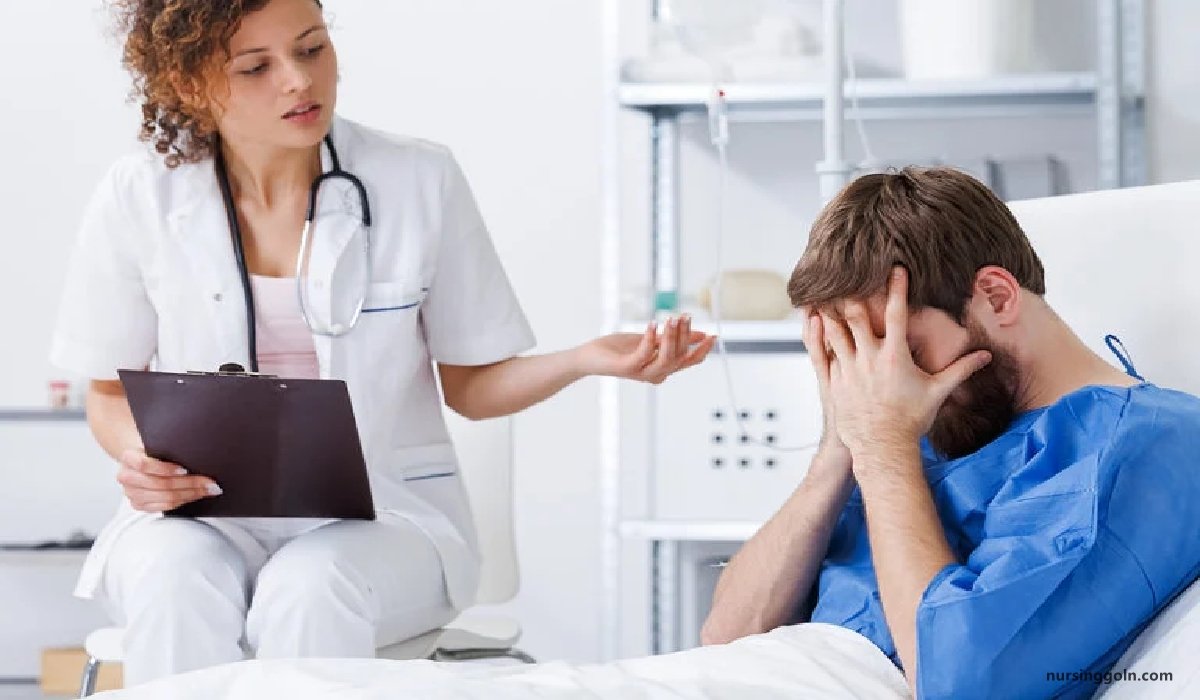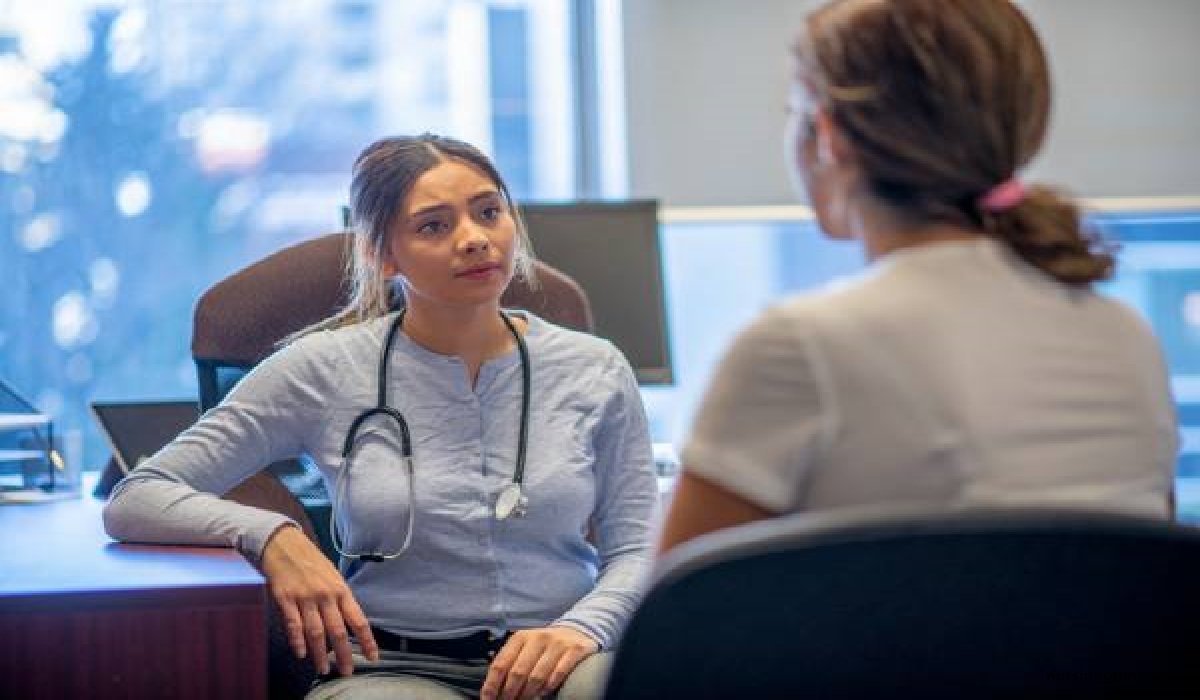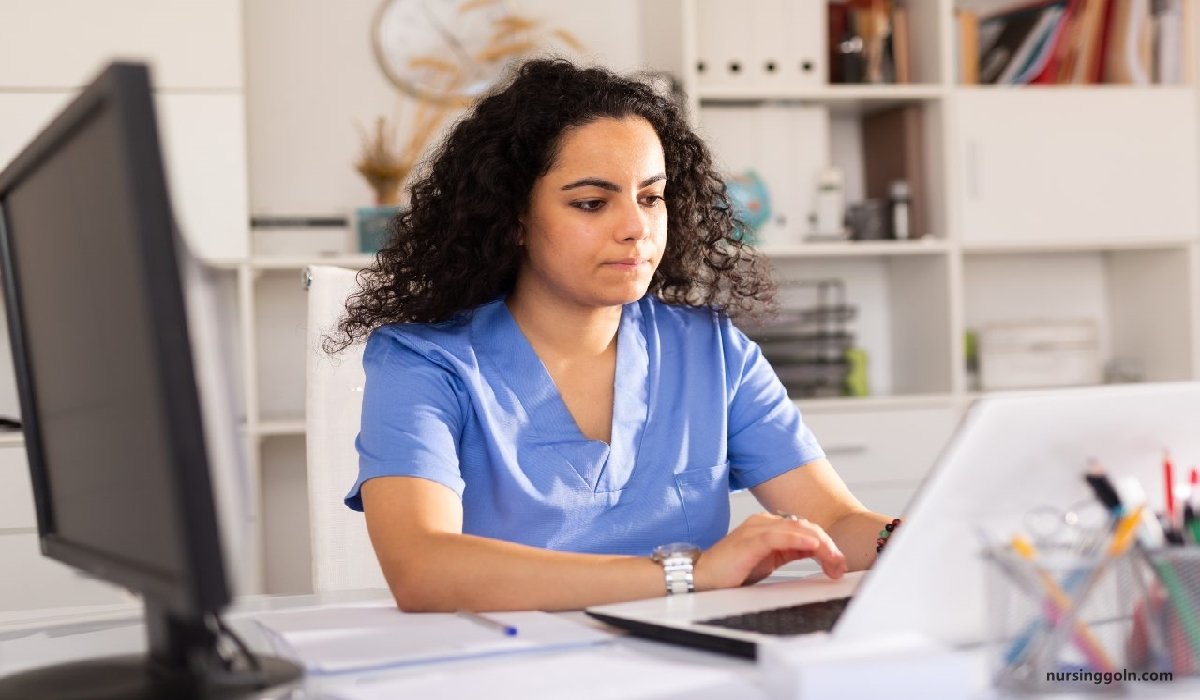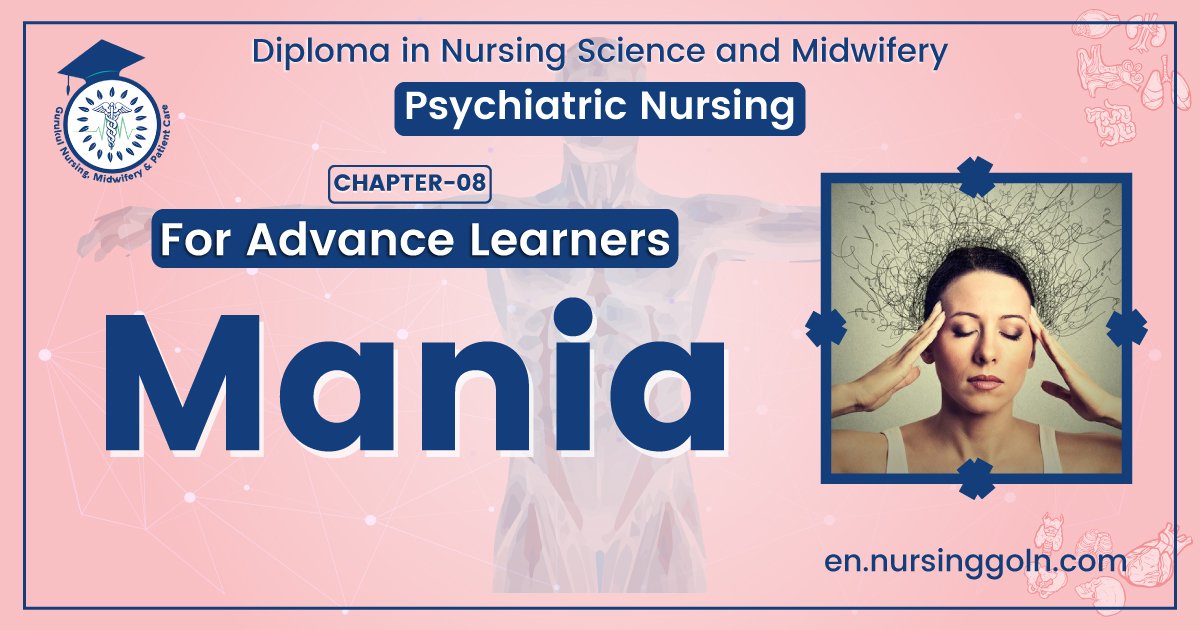Concept of Mania – This book covers the entire syllabus of “Psychiatric Nursing” prescribed by the Universities of Bangladesh- for Basic and diploma nursing students. We tried to accommodate the latest information and topics. This book is an examination-friendly setup according to the teachers’ lectures and examination questions.
At the end of the book previous university questions are given. We hope in touch with the book students’ knowledge will be upgraded and flourish. The unique way of presentation may make your reading of the book a pleasurable experience.

Concept of Mania
Mania is a mood disorder. It is the name given to the illness when the patient is excessively happy and energetic.
Or,
It is a psychiatric medical condition in which client manifests a clinical syndrome characterized by extremely elevated mood, energy, hyperactivity, unusual thought process with flight of ideas and acceleration in speaking process.
[ Ref: KP Neerija/1/2/4011]
Types of mania
A. Hypo ma’nia: Mild form of exaltation with excessive self-evaluation and over estimationn of personal ability patient may be socially acceptable and working efficiency unimpaired
B. Acute ma’nia: An attack of mänia with all typical features.
C. Delirious ma’nia: A severe form of acute ma’nia precipitated by exceptional physical or emotional stress and associated commonly with infection or intoxication clouding of consciousness, disorientation hallucination, delusion and incoherence are also present.
D. Chronic ma’nia: A state of ma’nia lasting over a long period, even 20 years or more.
[Ref Lecture of KDH sir]
Or,
I.
- Acute ma’nia
- Hypoma’nia or mild to moderate ma’nia
- Delirium ma’nia or severe ma’nia.
II.
- Primary ma’nia
- Secondary ma’nia due to organic cause
III.
- Description of recent manic episode
- ma’nia without psychotic symptoms
- ma’nia with psychotic symptoms
- Unspecified manic episode
- ma’nia with catatonic features
- ma’nia with postpartum episode
IV.
- ma’nia
- Hypoma’nia
- Mixed state or dysphoric ma’nia.
Central features of mania:
1. Hyper excited, elevated or irritable mood
2. Over activity
3. Extreme confidence
4. Decrease need for help
[Ref: KP Neeraja/I/Vol-2/4011]
Etiology of mania:
1. Heredity, genetic predisposition
2. Interference in neurotransmitter functioning and regulation
3. Stressful life events. For example, bereavement.
4. Secondary mania can occur due to a variety of
5. Neurological conditions, e.g. Multiple sclerosis, brain tumors, epilepsy, brain trauma
6. Metabolic disorders
7. Endocrinal disorders, e.g. Hyper-adrenocorticalism, hyperthyroidism
8. Conditions which affects brain functioning
9. Drug induced: Corticosterids, androgenic steroids, L-dopa, anti-depressants, stimulants
10. Co-morbid illnesses adversely affect the outlook for mania, e.g. alcoholism and substance abuse
[Ref: KP Neeraja/1/Vol-2/4011]

Clinical features of mania:
1. A persistently elevated expansive or irritable mood.
2. Inflated self-esteem or grandiosity.
3. Hyperactivity or psychomotor agitation.
4. Disturbance in sleep-decreased need for sleep.
5. Pressured speech-more talkative than usual or pressure to keep talking.
6. Flight of ideas-a subjective experience where thoughts are racing.
7. Distracted-poor attention span, responds to multiple, unimportant or irrelevant external stimuli.
8. Excessive involvement in pleasurable activities. For example, excessive spending habit, uninhibited and excessive sexual activity.
9. Dress is often inappropriate with bright colors that do not match, excessive make-up and jewelry.
10. Marked impairment in occupational functioning in social activities or relationships with other.
[Ref: S Nambi/2/83-841]
Biological/melancholic features of mania:
1. Loss of appetite.
2. Decrease libido.
3. Sleep disturbance.
4. Loss of weight,
5. Diurnal variation of mood.
6. Constipation.
7. Amenorrhoea in case of woman.
Clinical features of acute mania:
1. Euphoria, elation (stage-II) and exaltation of moods (stage-III)
2. Elation of mood, moderate elevation of mood, increased psychomotor activity. joyous excitement
3. Exaltation of moods (stage-III); intense elevation of mood, grandeur delusions (affective tonality), frequent variations in moods
4. Unselective enthusiasm for interacting with people and surrounding environment
5. Extreme irritability may easily be evoked especially when the person is stopped from doing what he is intended to do, however, they may be unrealistic
6. Inflated self-esteem
7. Over activity/increased activity, restlessness
8. Obvious over talkativeness or pressured or rapid speech, used rhythmic, rhyming language, loudly speaks, difficult to interrupt
9. Socially embarrassing behaviour, distress to family
10. Inflated self-esteem or delusion of grandiosity, persecution, paranoid, delusion of control, reference, etc, may be seen
11. Distractibility-easily attention will be drawn to irrelevant stimuli
12. Indiscretion
[Ref: KP Neeraja/1/Vol-2/402-403]
Delusion present in mania: Grandiose delusion.
Treatment of mania:
Hospitalization: If patient is too excited, is a public nuisance and unable of taking care of himself, then hospitalization is essential.
Drug therapy:
A. Antipsychotic drugs: For mania
- Heloperidol
- Chlorpromazine (opsonil, largectil)
B. Anti-manic drugs:
- Lithium-used in both acute stage and in preventing relapse.
- Carbamazepine (tegretol) mainly prevention of recurrences in bipolar illness.
- Na valproate prophylaxis in bipolar disorder.
- Lamotrigine & quetiapine are increasing being used
C. Anti-depression drugs
D. ECT (electroconvulsive therapy).
[Ref-Davidson’s/24th edition]

Drugs used in manic episode:
Name of the drugs | Dose |
| Haloperidol | Injection haloperidol 5-10 mg IM 2 hours by till the patient is sedated |
| Chlorpromazine | Injection chlorpromazine 50-100 mg IM |
| Carbamazepine | 600-1800 mg/day |
| Sodium valproate | |
| Lithium |

Nursing management of mania:
The person suffering from manic disorder is an overactive individual with an excessive amount of energy. The patient is easily stimulated mentally and physically. The patient may react to this stimulation by constantly being excited, domineering, irritable or vulgar. His attention is easily distracted. Feelings of aggression and hostility are directed outward, to the environment. The overactive patient might be extremely likeable, talkative and eupho.
Diet:
1. Special attention must be given to the patient’s diet because he is usually too busy to eat and hence may lose weight and dehydration may occur.
2. Meals and fluids are to be given under supervision.
3. Extra nourishment maybe required to compensate for extra activity.
Medications:
Drugs are of great help in dealing with problems of restlessness, sleeplessness and fatigue associated with over activity.
Physical Needs
1. Reduce physical activities and provides adequate sleep
2. Improve diet and fluid intake
3. Protect the patient from injury to self and others
4. Reduce verbal activity
5. Pursue the patient to attend to personal hygiene.
6. Psychosocial Needs
7. Improve judgment
8. Improve attention and concentration
9. Improve communication
10. Appropriate socialization
11. Realistic self-concept.
Emotional needs:
1. Frequent mood changes and excitement may be there.
2. Approach the patient in a calm, unhurried and consistent manner.
3. Alway: speak quietly, tactfully and patiently.
4. Avoid arguments, discussions or situations that are stimulating and irritating.
5. Suggestions and persuasion are more effective.
6. One nurse should establish rapport with one overactive patient and improve his confidence in her.
7. Short, simple direct answers should be quietly given when the patient asks questions.
8. Maintain a low level of stimuli in the patient’s environment.
9. Observe the patient’s behavior frequently. Remove all dangerous objects from patient’s environment, so that in his or her hyperactive, agitated state they cannot be used to harm self or others.
Maintaining a therapeutic environment:
1. The ward must be quiet and pleasant.
2. Factors that irritate the patient like excessive noise, bright colors, etc. are to be avoided.
3. Separate rooms may be ideal with simple furnishing.
4. Fluctuation of mood states must be watched.
5. Active games, ward occupation and creative work will channelize his energy.
6. Drug therapy is essential for sedation.
Others:
1. Supervision is necessary for adequate nutrition and rest.
2. Bursts of excitement and destructive actively may result in injuries.
3. Therefore, they should be observed and attended.
4. Supervision and directions to maintain personal hygiene like bathing, oral hygiene are essential.
5. Care to be taken that the patient is dressed appropriately.
[Ref: S Nambi/2/84-861]
Read more:
